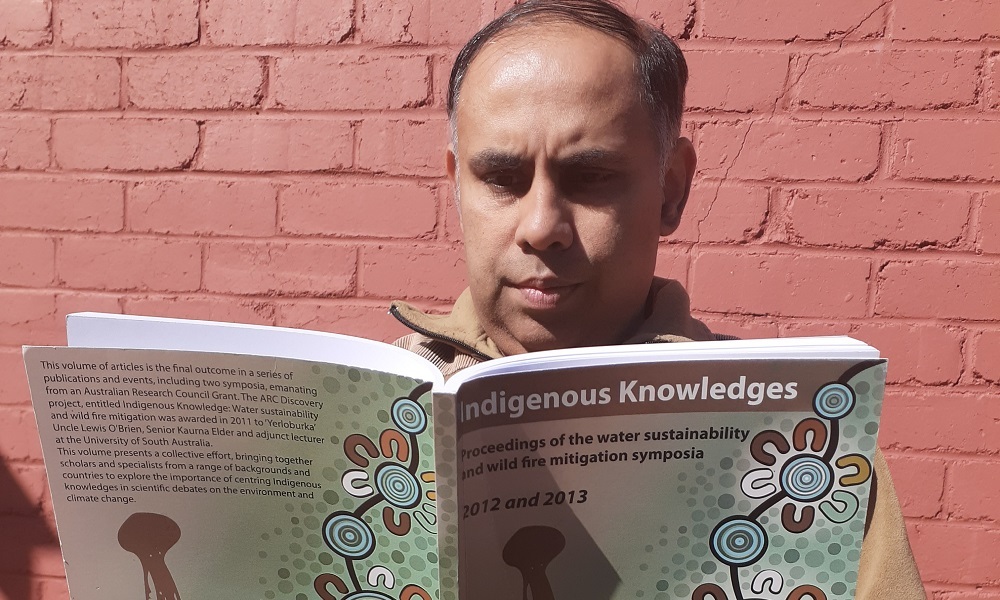I am a casual relief teacher and a volunteer at Prescott College in Prospect, South Australia.
I recently read Indigenous knowledges: Proceedings of the Water Sustainability and Wild Fire Mitigation symposia, 2012 and 2013, a book edited by Suzi Hutchings and Anne Morrison from the University of South Australia.
This book was recommended to me by my father, who has done a lot of reading about Aboriginal Dreamtime stories. My father also wrote a book in 2004 in Bengali, the national language of Bangladesh, to educate native speakers about the First Nations of Australia. It was published in 2017.
I thoroughly enjoyed the book by Hutchings and Morrison because it is the final outcome in a series of publications and events from a three-year Australian Research Council (ARC) Discovery project. The project explored the impact of Indigenous knowledges in sustaining the environment in the 21st Century era of climate change.
The ARC project was instrumental in bringing together local, national and international Aboriginal Elders, Indigenous and non-Indigenous academics, and community members to discuss the intrinsic role of Indigenous knowledges in understanding the past and contemporary environment.
I enjoyed reading the book because I teach high school Geography, Business Studies and Research Project, a Year 11 South Australian Certificate of Education (SACE) subject where students have the opportunity to study an area of personal interest in depth. In my experience, students are often interested in researching topics related to water sustainability and wild fire mitigation as part of their Geography assignments and Research Projects in Year 11. These topics continue to affect our daily lives and change the way we are all going to live in the future. I often talk to students about the importance of Indigenous knowledges and how they will help us to sustain our natural resources.
This book provided information from both Indigenous Australians and Indigenous Canadians. It shows the link between Indigenous and non-Indigenous people, by advocating that everyone is affected by environmental degradation. I liked this book because it's about an initiative where both Indigenous people and their non-Indigenous counterparts are willing to share their knowledge and put it into action so that we can all have a better future. It also showcased a lot of experts who gathered in Adelaide in 2012 and 2013 to share their knowledge and make it widely available for future generations to come.
The book has helped to motivate my students and I to participate in projects and volunteer to make a difference. I have been to St Kilda Mangrove Trail, a 1.5 kilometre elevated walkway that twists through tidal salt marshes, mangroves and sea grass channels to a lookout that has scenic views across the Barker Inlet; it is located in the north of Adelaide and I have taken Geography students there on excursions a couple of times. At the moment, the trail is facing a dieback because of a leaking salt pool nearby that is contributing to the salinity. That sort of man-made disaster motivated me to become a volunteer and try to contribute to restoring its natural resources.
I enjoyed this book because it gives an Indigenous perspective to water sustainability and wildfire mitigation, in contrast to Western scientific alternatives. I would recommend it to anyone who is interested in learning more about how to prevent destruction of natural water sources and the climate. After all, once we have destroyed our water resources, then sustaining life is difficult. I now look forward to reading books on similar topics.
How do you care for your own health and wellbeing? Do you have a story you’d like to share with Wellbeing by Teacher? Here’s a handy guide on how to get started.


